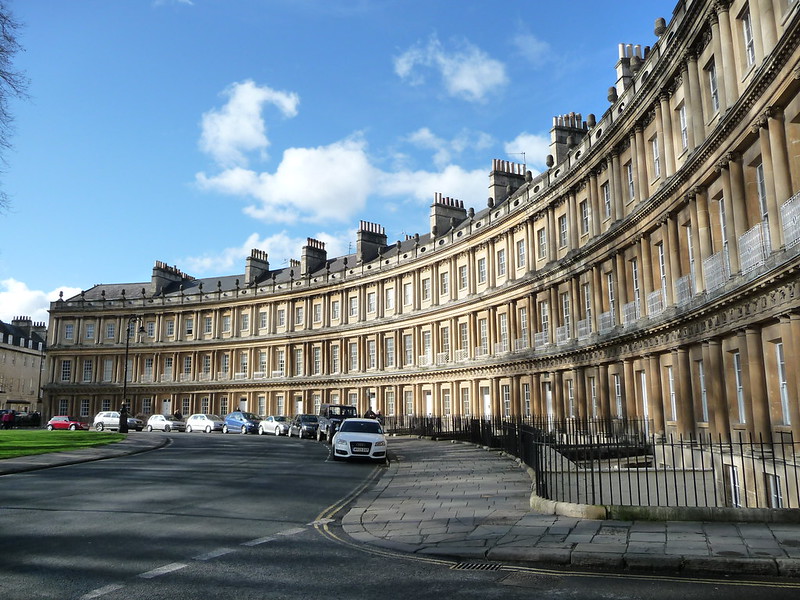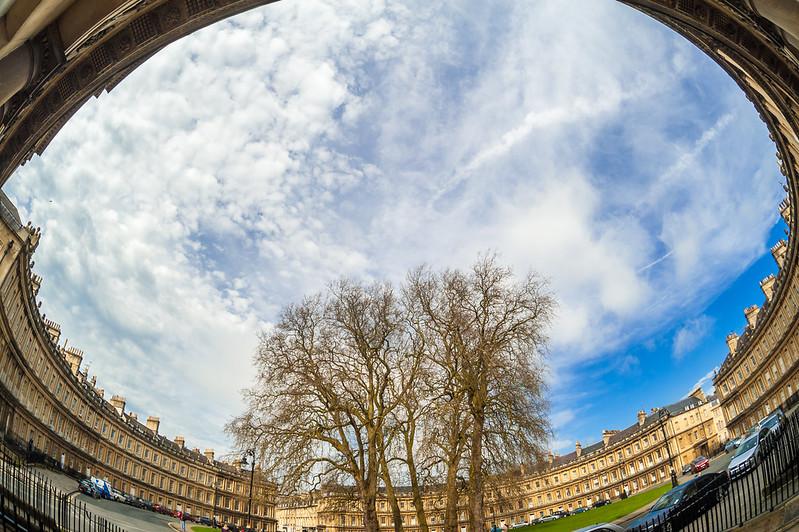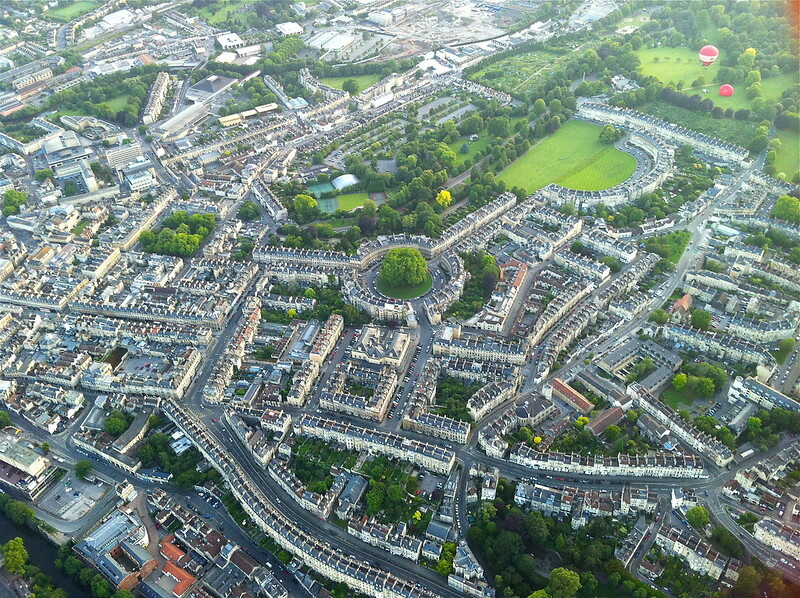The Circus is originally known as King's Circus, is a historic ring of large townhouses located in city Bath, Somerset, England. It forms a circle with three entrances. It was designed by John Wood, the Elder, and built between 1754-1768. It is considered a landmark example of Georgian architecture. Its name derives from Latin circus, which means a circle, oval, or ring. It is a Grade I listed structure. The Circus is divided into three equal-length segments, with a grassy area in the middle. Each segment faces one of 3 entrance, so a classic façade is always visible.
 |
| The Circus Bath |
King's Circus Bath
John Wood, the Elder, designed the Circus. It was originally known as King's Circus. Wood, the Elder, was convinced that Bath was the main center of Druid activity throughout Britain. He surveyed Stonehenge and designed the Circus with a 97-meter diameter to replicate this.
Wood died three months later than the first stone was laid. His son John Wood, The Younger, finished the project according to his father's plan. The first leases for the west segment were granted in 1755-1767, the southeast section in 1762-1766, and the north segment in1764-1766.
John Wood the Elder saw the Circus as part of his grand vision to create a Palladian-style architectural landscape for the city. Queen Square, which was located nearby, and the Forum were also part of John Wood's grand vision. The Circus, Wood's greatest achievement, is widely considered to be his masterpiece.
Between 1758-1774, Thomas Gainsborough, a painter, lived at Number 17. He used a portion of the space as his studio for portraits. Number 15 was the home of Admiral Sir Richard Bickerton, his family, and others in the first half of the 19th century.
Image / Source
 |
| Circus circle |
Image / Source
Circus Bath
Circus Architecture — The elegant curving facades use three Classical orders: the Greek Doric, Roman/Composite, and Corinthian. Circus symbols — The Doric entablature's frieze is decorated with 525 pictorial emblems and alternating triglyphs. These include serpents, nautical symbols, and devices representing the arts, sciences, and masonic symbols. Stone acorn finials are used to decorate the parapet.
The central area was initially paved with stone setts. This covered a reservoir that provided water to the houses. The Circus residents created a garden in the middle of the space in 1800. The central area has been replanted and is now home to a group of large plane trees.
 |
| The Circus of Bath |
Image / Source
 |
| Circus gainsborough |
Image / Source
 |
| The circus apartment bath |
Image / Source
 |
| Bath UK the circus |
Image / Source
 |
| Circus at bath |
Image / Source
 |
| Bath England the circus |
Image / Source
 |
| The circus bath England |
Image / Source
 |
| Circus bath |
Image / Source
The Circus Bath Google Map
The Circus Bath Video
 |
| The circus Bath |
Image / Source
If you look closely at the stonework, you will see many emblems such as serpents, acorns, and nautical symbols. Wood was well-known for his admiration of the druids. Who were the creators of prehistoric stone circles. Wood was convinced that Bath was the main center of Druid activity throughout Britain and studied Stonehenge to design the Circus. According to legend, the Circus is connected to the Royal Crescent via a ley-line, and their design represents the sun or the moon.
It is no surprise that this extraordinary landmark has been the home of many famous people throughout the years. Number 17 was where Thomas Gainsborough lived between 1759-1774. He used the house as a studio for his portraits. The Circus was also home to Nicholas Cage, a Hollywood actor. If you're in Bath, be sure to stand in the middle of The Circus to admire this beautiful and inspiring piece of architecture. Also, to see if your words will echo in that exact spot!

No comments:
Post a Comment